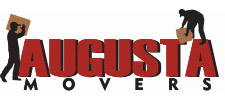Along with the joy and anticipation of the process of moving into a new home, there is often a great deal of unpredictability and at times, frustration, which can leave even the most good-natured optimist feeling emotionally drained and physically exhausted. And while this is not unusual and almost always a temporary detour on the road to happy home ownership, it can also be a time when people are tempted to trade common sense and safety for speed and shortcuts.
Because the process of moving often comes with a seemingly unending list of tasks, one of the most common complaints is feeling like you’re constantly falling behind schedule, struggling to complete what seemed like simple tasks while the dreaded to-do list only seems to get bigger. This is when most people start to experiment with various methods to compensate for a lack of time, which generally involves rushing through tasks and basically trying to squeeze a few extra minutes out of every hour in the day.
Unsurprisingly, it is this frenzied, delirious sprint to the finish line of moving day when we are at our most vulnerable, ignoring basic safety lessons and precautions and putting ourselves, and often others as well, at serious and unnecessary risk. Injuries sustained while in the process of moving are extremely common, and the seriousness/severity of such injuries increases the more we rush and push ourselves to meet unrealistic deadlines. Here is a brief list of some of the most common moving-related injuries, along with some ideas for how to avoid them. Enjoy!
Back Injuries
One of the most common and potentially serious injuries associated with moving, the back receives a tremendous amount of stress and strain throughout the process – mainly because of poor technique and – you guessed it – rushing! What many people do not realize is that although it might feel like your arms or legs are taking the brunt when lifting something heavy, your back muscles are often taking a large part of the burden. And if the weight happens to be a bit too much for those muscles to deal with, the chance of suffering a back injury increases significantly – everything from pinched nerves and muscle strains to herniated disks and damaged vertebrae.
Avoiding Back Injuries
Common sense and prevention work hand in hand and are the most effective tools for avoiding a painful setback. Knowing your limitations and when to ask for help, along with proper technique and access to appropriate moving tools, can go a long way towards keeping you healthy, whole, and most importantly, out of the emergency room.
Muscle Injuries
Moving is guaranteed to have you and your muscles twisting and turning in all kinds of new and unwelcome directions – a chaotic mix of bending, pulling, lifting, pushing, etc., which takes a toll on your body. Overtaxing our muscles leads to a trickle-down effect where other areas of the body are asked to do more than they are equipped to handle, which can lead to a variety of injuries including strains, sprains, tears, and even broken bones.
Avoiding Muscle Injuries
Once again, an ounce of prevention is worth a pound of cure. Stretching to warm up before attempting to move heavy, awkward items is always recommended, as is proper hydration and regular breaks to recuperate. And consider hiring professional movers. After all, you won’t be saving money in the long run if you are stuck nursing a sprain or torn ligaments for days or possibly even weeks!
Hands, Fingers, Feet and Toes
Among the most common moving-related mishaps are injuries that impact the extremities – hands, fingers, feet and toes. Cuts, scratches, scrapes and bruises are almost unavoidable at times, but more serious injuries such as broken fingers/toes, or sprained ankles/wrists can be the outcome if proper safety and precautions are not being observed.
Avoiding Extremity-Related Injuries
Wearing proper shoes and work gloves is the easiest way to protect our vulnerable fingers and toes from most of the wear-and-tear that comes with the moving process. Shoes with good grip and traction will also prevent unnecessary slips/falls, while proper work gloves will protect the hands and fingers from minor injuries like cuts, scratches, and torn fingernails, while also improving your grip and preventing important/valuable items from being dropped (often onto unprotected feet/toes).
With just a modest amount of precaution and common sense, your moving day will be remembered not for some painful, avoidable injury, but rather as a joyous, if exhausting, step forward!

